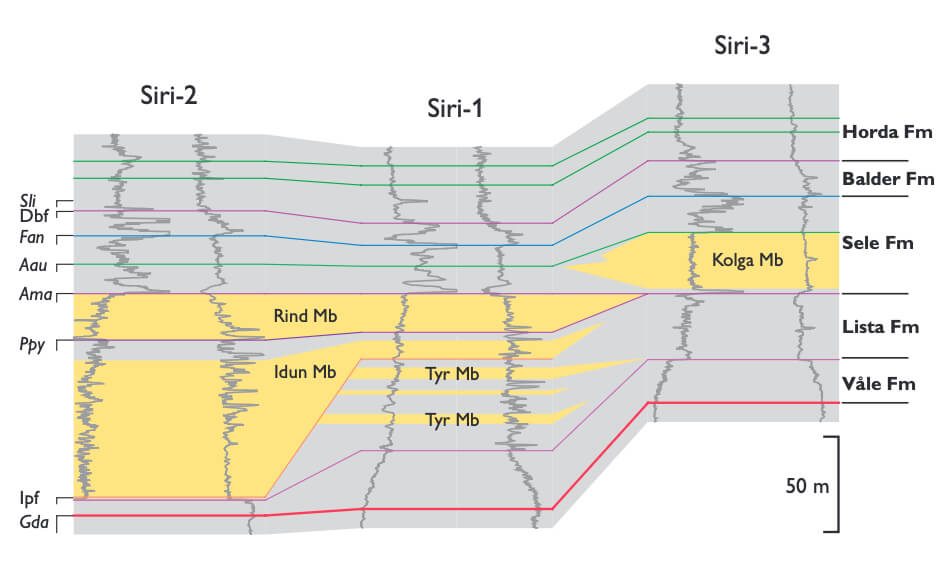
How to Cite
Share
Abstract
Intense drilling activity following the discovery of the Siri Field in 1995 has resulted in an improved understanding of the siliciclastic Palaeogene succession in the Danish North Sea sector (Fig. 1). Many of the new wells were drilled in the search for oil reservoirs in sand bodies of Paleocene–Eocene age. The existing lithostratigraphy was based on data from a generation of wells that were drilled with deeper stratigraphic targets, with little or no interest in the overlying Palaeogene sediments, and thus did not adequately consider the significance of the Palaeogene sandstone units in the Danish sector. In order to improve the understanding of the distribution, morphology and age of the Palaeogene sediments, in particular the economically important sandstone bodies, a detailed study of this succession in the Danish North Sea has recently been undertaken. An important aim of the project was to update the lithostratigraphic framework on the basis of the new data. The project was carried out at the Geological Survey of Denmark and Greenland (GEUS) with participants from the University of Aarhus, DONG E&P and Statoil Norway, and was supported by the Danish Energy Agency. Most scientific results cannot be released until September 2006, but a revised lithostratigraphic scheme may be published prior to that date. Formal definition of new units and revision of the lithostratigraphy are in preparation. All of the widespread Palaeogene mudstone units in the North Sea have previously been formally established in Norwegian or British wells, and no reference sections exist in the Danish sector. As the lithology of a stratigraphic unit may vary slightly from one area to another, Danish reference wells have been identified during the present project, and the lithological descriptions of the formations have been expanded to include the appearance of the units in the Danish sector. Many of the sandstone bodies recently discovered in the Danish sector have a limited spatial distribution and were sourced from other areas than their contemporaneous counterparts in the Norwegian and British sectors. These sandstone bodies are therefore defined as new lithostratigraphic units in the Danish sector, and are assigned Danish type and reference sections. There is a high degree of lithological similarity between the Palaeogene–Neogene mudstone succession from Danish offshore boreholes and that from onshore exposures and boreholes, and some of the mudstone units indeed seem identical. However, in order to acknowledge the traditional distinction between offshore and onshore stratigraphic nomenclature, the two sets of nomenclature are kept separate herein. In recent years oil companies operating in the North Sea have developed various in-house lithostratigraphic charts for the Paleocene–Eocene sand and mudstone successions in the Danish and Norwegian sectors. A number of informal lithostratigraphic units have been adopted and widely used. In the present project, these units have been formally defined and described, maintaining their original names whenever feasible, with the aim of providing an unequivocal nomenclature for the Palaeogene – lower Neogene succession in the Danish sector. It has not been the intention to establish a sequence stratigraphic model for this succession in the North Sea; the reader is referred to the comprehensive works of Michelsen (1993), Neal et al. (1994), Mudge & Bujak (1994, 1996a, b), Michelsen et al. (1995, 1998), Danielsen et al. (1997) and Rasmussen (2004).
How to Cite
Share
Downloads
Editors: Martin Sønderholm & A.K. Higgins
The Review of Survey activities presents a selection of 18 papers reflecting the wide spectrum of activities of the Geological Survey of Denmark and Greenland, from the microbial to the plate tectonic level.
Activities in Denmark: The Survey's activities in Denmark are documented by 11 papers. The main themes [...]










